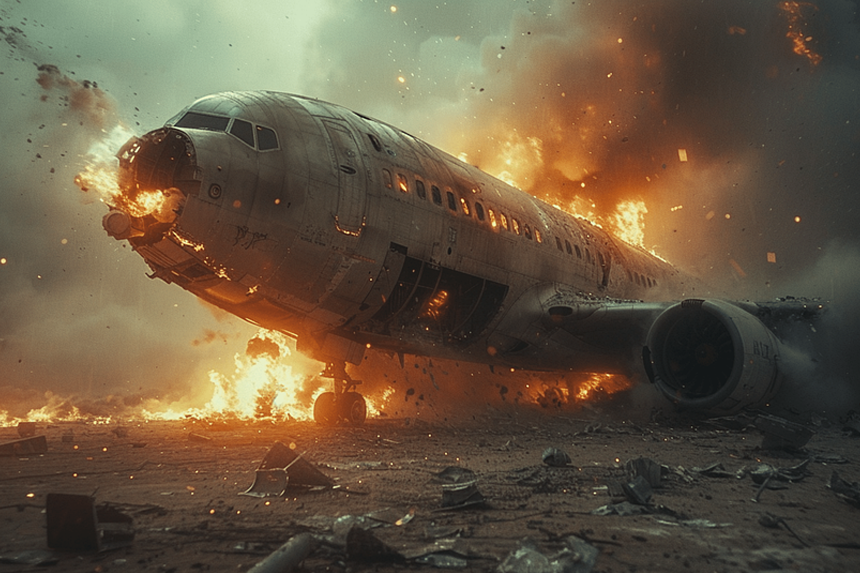Examining the reason for a Delta plane crash that happened on Monday at Toronto Pearson Airport, investigators Thought the aeroplane crashed-landed and turned over, and all eighty persons on board miraculously escaped. The incident has prompted considerable alarm and highlighted questions about aircraft safety, emergency response, and probable technical breakdowns.
How Did the Delta Plane Crash Occur?
From Minneapolis, the Delta airline crash consisted of a flight that skidded along the runway with flames seen before stopping upside down. Observers at the airport detailed the horrific image of the plane losing control upon landing. Some passengers described feeling a jolt before realizing the aircraft was rolling over.
Emphasizing that this was “not the time” to speculate on the cause of the crash, Airport CEO Deborah Flint said investigators would examine the aircraft on the runway for the next 48 hours. She assured that the airport authorities are working closely with the Transportation Safety Board of Canada to determine what went wrong and to prevent such incidents in the future.
What Were the Injuries and Medical Response?
Twenty-one people sustained injuries, though none were life-threatening. Two people still required medical treatment; nineteen of the injured had been released from the hospital by Tuesday. A spokesman from Peel Regional Paramedic Services indicated that injuries varied from head trauma and back sprains to nausea and vomiting due to jet fuel exposure.
Arriving at the scene minutes later, emergency responders guaranteed a safe departure for every passenger and crew member. A timely response was vital to saving further injuries and fatalities. Firefighters also worked fast to extinguish the flames that had erupted upon impact.
Among the injured was a child, who was in stable condition, according to the Hospital for Sick Children in Toronto. Medical professionals have guaranteed that all patients are receiving proper care and will make a full recovery.
What Did Passengers Experience?
Passengers recounted a harrowing ordeal, with several finding themselves hanging upside down in their chairs. Passenger Peter Koukov remembered: “We were upside down hanging like bats.” They had to let go, descending from the ceiling and then climbing onto the snow-covered tarmac.
Several passengers recounted hearing loud noises before the impact, followed by a sudden sense of weightlessness as the aircraft flipped. Many thanked the flight crew for their fast response, which guided travellers to safety.
Firefighters and emergency responders arrived quickly at the site to help with the evacuation. In spite of the turmoil, no lives were lost; aviation professionals attribute this to the well-trained crew and the aircraft’s safety systems.
What Was the Condition of the Plane and the Weather?
Canada’s Bombardier made the 16-year-old CRJ900 aircraft involved in the Delta plane crash. At the time of the tragedy, 76 passengers and four staff members were on board. Investigators are investigating whether a mechanical problem might have caused the crash even while the plane underwent regular maintenance inspections.
Monday was classified as a “clear day” for operational recovery, even though the airport had recently experienced severe weather conditions. Officials verified that the runway was dry at landing and that there were no crosswind conditions capable of compromising the aircraft’s stability.
Before the crash, authorities claimed that snow had ceased, but freezing temperatures and heavy winds had set in. Some aviation experts suggest that residual ice or unexpected wind patterns could have contributed to the incident.
What Possibly Caused the Crash?
As they look at the Delta plane crash, authorities are weighing several elements. Audio recordings taken from Pearson’s air traffic control tower indicate that the flight was cleared to land just after 2:00 PM on Monday. The tower also advised pilots of a likely air flow “bump” in the glide path owing to another plane ahead.
Analysts speculate that upon landing, the aircraft might have struck something on the runway, a light. Still, no clear cause has been found yet. Investigators will be reviewing flight data, pilot communication, and maintenance records to piece together the events leading up to the tragedy.
How Has the Aviation Industry Responded?
This occurrence marks at least the fourth significant aviation accident in North America in the past month. Among these was a fatal collision in Washington, DC, between an American Airlines jet and a US Army helicopter that claimed the lives of all 67 persons on board.
Aviation experts highlighted the fantastic survival of all 80 passengers on board the Delta jet disaster. They attributed developments in aeroplane safety and the fast response of flight attendants and emergency workers to averting a sad result.
Following the crash, the aviation industry has renewed its focus on passenger safety, emergency response protocols, and aircraft maintenance standards. Experts underline the necessity of continual training for pilots and crew members and stricter safety standards to prevent future accidents.
What Happens Next?
The Transportation Safety Board of Canada continues its investigation into the Delta jet disaster. As of Tuesday, two runways at Pearson Airport remained closed. Officials are likely to announce further findings in the following days.
Counselling and assistance are being provided to aeroplane passengers to help them cope with the horrific event. Meanwhile, Delta Air Lines has reassured the public that they are fully supporting the inquiry and will apply any required safety enhancements based on the results.
Aviation authorities advise travellers to keep calm and believe that required safety precautions are being taken. Although air travel is statistically one of the safest forms of travel, the airline sector continues to learn from events like these to ensure that it stays safe for every passenger.








